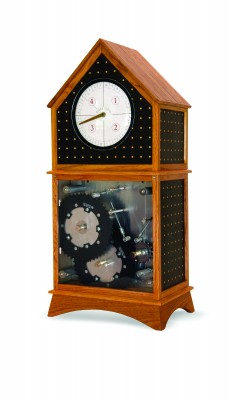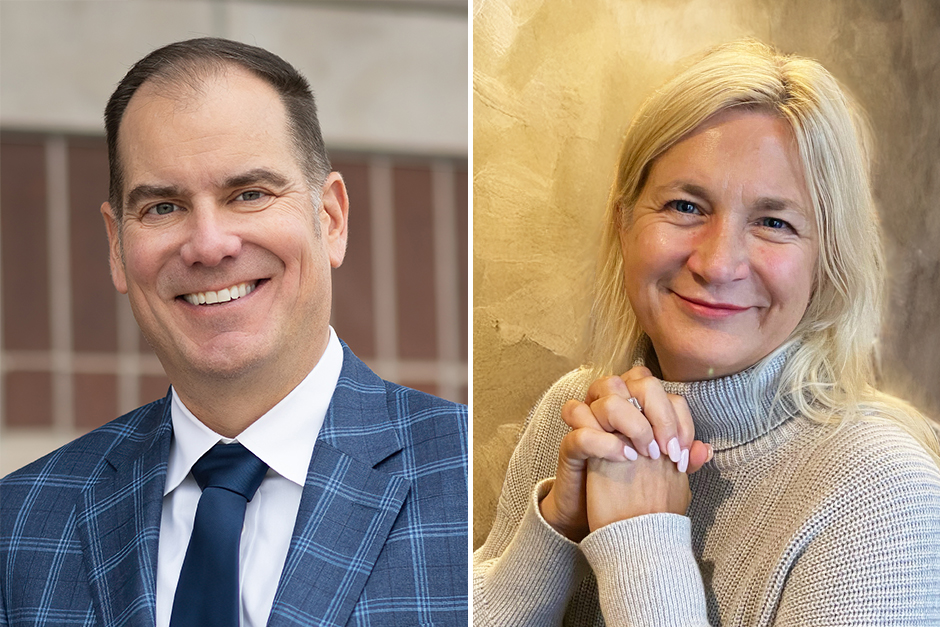Measuring the rhythm of a block
At Cornell, the day of the month matters less than the day of the term, and the entire campus moves to the rhythm of the three-and-a-half-week term or block.
A mechanical sculpture by art Professor Tony Plaut ’78, the Block Clock, tells passersby in Cole Library what day and week of the block it is. But while it looks like a clock—a face and a hand to tell time, a classic looking case—it doesn’t use any clock parts. In fact, it uses bicycle sprockets, various hardware store items, and a small electric motor. It took Plaut two years to make the clock, with the first 18 months spent trying to figure out how it would work, and another six months actually building it. The planning took so long because he had to solve a pretty complex problem: how to create a mechanism that would transform a motor turning at one-revolution per minute to a clock hand that makes one-revolution every 40,320 minutes. Which, in case you didn’t know, is the number of minutes in a term plus block break.
“It was in the back of my mind all the time; I thought about it constantly until I devised a solution,” he said. His elegant solution, which uses very few moving parts and maintains adequate accuracy, can be viewed through the clear plastic front.
The structure, which resembles a house, a theme that runs throughout Plaut’s art, is made from pegboard and some oak planks that were salvaged from Maxwell Auditorium. So not only does it measure Cornell’s signature course schedule, it’s actually made from a piece of Cornell.
In addition to being part of his repertoire of mechanical sculptures, the Block Clock pays tribute to something else: Plaut’s lifelong fascination with clocks and watches.
When he was a boy, his father bought him a watch repair kit, and hung up a sign in his office building lobby that read “Amateur watch repair. No guarantees.” And every few weeks, his father would bring home watches for Plaut to work on.
“Some of them I could fix, and some of them I just broke further,” he said.
He even considered becoming a watchmaker before he decided to attend Cornell.
He’s been gratified by the response to the clock. It has a purpose, and it also instills a sense of wonder in people.
“People say it seems like a kind of magic,” he said, “and that’s something that runs through my artwork.”



